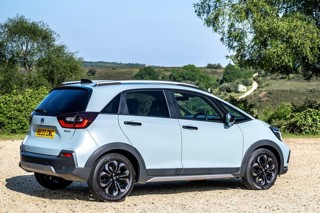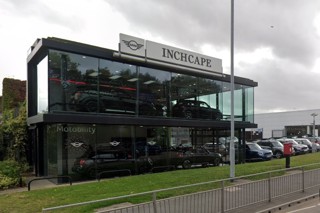Review
Honda has broken from the pack and is embracing and celebrating the older car buyer.
The company has no plans to go all out for a younger audience with its new Jazz, as it did with the Civic.
With the typical customer of the Jazz aged in their late 50s/early 60s, it’s a sensible approach.
Instead, Honda has listened to its customers about weaknesses with the current model, and this has led to improvements such as smoother suspension, lighter steering, a quieter cabin and a quality look and feel.
“There’s no embarrassment about customers for Jazz being older, more discerning and affluent – we encourage that,” said Ken Keir, Honda Motor Europe senior vice-president and UK managing director.
Perhaps as a consequence, the Jazz has one of the highest levels of customer retention, at more than 60%.
With the model accounting for almost one-third of Honda’s UK sales – around 28,000 units – getting the new one right was crucial.
The driving experience
Step into the Jazz and sit back: the seats are surprisingly firm and supportive and there will be few complaints of bad backs after long journeys.
Run your hands over the chunky steering wheel and stretch those elbows – everything tells you this is a big car. Except it’s a B-sector car.
The figures are revealing. It is 55mm longer and 44mm wider than its predecessor with a longer wheelbase.
Rear passengers have 40mm more knee room, while the rear doors open wider by 80mm.
The A-pillar has narrowed by 20mm to improve visibility and the accelerator, brake and clutch pedals are spaced wider apart.
Boot capacity is a class-leading 399 litres, larger than
C-segment cars like the Golf and Focus.
All those measurements serve to increase space – to make the Jazz feel like a bigger car.
On the interior
The one letdown is the design of the centre console. With the exception of the Civic, Honda struggles with its interiors.
The Jazz dash is all outsized buttons, knobs and switches laid out in a somewhat haphazard way.
The kindest description would be ‘functional’. Yes, the materials are high quality, but the overall impression detracts from the car.
Best divert customers’ attention to the back, where nice touches include the innovative 60:40 split seats that fold flat at the flick of a switch but also flip up and tuck back to create additional luggage space behind the front two seats.
The sales split between the 1.4-litre and 1.2-litre petrol engines will change from 90:10 to 75:25 thanks to the new, more powerful i-VTEC technology used on the 1.2-litre.
The private/fleet split will be unchanged at 70:30. Most popular model will be the 1.4-litre ES, at 25% of the 28,000 sales.
All this improved quality and space comes at a slight premium of £150-200 more than the current Jazz. Cars go on sale this month, with the i-Shift automatic gearbox (an £800 upgrade) added to the 1.4-litre from January.
Behind the wheel
The Jazz isn’t a class leader for handling, nor is it meant to be. It’s capable and easy to drive, perfectly tailored for its 60-plus customer base.
Pushed hard, there’s a bit of understeer, but nothing too unsettling. The 1.4-litre engine is punchy and eager to rev.
It’s also refined at motorway speeds. The real star is the new
1.2-litre i-VTEC, however.
More powerful and quicker than some rivals’ 1.4-litre units, Honda anticipates 55mpg efficiency.
It matches the 1.4-litre for refinement and should win over customers on a test drive.
That’s good news for dealers, as the 1.2-litre will be more readily available than the 1.4-litre, which is already facing global demand greater than supply.
Factsheet
- Price
- Honda
- Engine
- Jazz (2008)
- Performance
- 1.2
- Transmission
- 1.2
- Efficiency
- 90
- RV 3yr/30k
- 110
- Start mileage
- 12.5
- Current mileage
- Key rivals
- 0000000000000000000
- 9,990


















